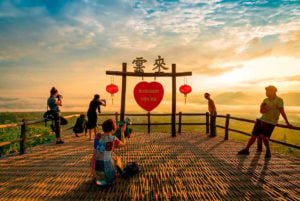Top Safety Tips for Riders in Thailand
ATTENTION! The videos on this page contain accidents and human casualties. Therefore, it is not recommended to watch these videos for pregnant women and impressionable people. But every rider traveling in Thailand must know this.
Also, don’t forget to read our article on why even experienced riders sometimes have motorcycle brakes fail on mountain roads.

Tip #1
In Thailand, it is common to see a stream of cars ignoring traffic lights that have been on red for several seconds. So before you drive through an intersection at a green light, you need to make sure that the path is clear and safe.
A friend of mine likes to joke about how some locals behave while driving through intersections with traffic lights:
a) A green light means you can go.
b) A yellow light means you need to go as fast as possible before the red light comes on. Can’t make it in time? Hit pedal!
c) Did the traffic light turn red? If there’s no police officer nearby, just ignore it! Instead, honk your horn and flash your lights! Hit pedal harder than you would if it was a yellow traffic light!
It may seem ridiculous, but don’t be surprised when you see it with your own eyes. Nevertheless, it would be best if you remembered that in Thailand, the traffic regulations for crossing intersections are the same as it is elsewhere in the world:
a) The green light means you can drive.
b) The yellow light means you must slow down and stop before the stop line.
c) The red light means you must stop and wait for the green light.
Before you go exploring the tourist attractions in Chiang Mai, check out the videos we have posted below. The video below is from traffic CCTV in Chiang Mai. After watching the videos, you will be able to understand in advance what you should expect on local roads. Perhaps some local people think that the traffic light was invented for fools, and cowards invented the brakes. Get ready for this!
Tip #2
You can find the road sign “Caution, elephants” in some Thailand provinces. You need to know that this sign is not for curious tourists looking for an elephant to take a selfie. The point is that wild elephant is pretty dangerous and unpredictable. Disturbed wild elephants can be extremely dangerous for your life and your vehicle. In addition, you can find these signs in places where elephants usually cross the road or keepers lead them.

Anyway, when you see the “Caution, elephants” sign, slow down and be very careful. Particularly at night, because elephants can be barely seen in the dark, you can easily hit one of them.
Tip #3
In Thailand, people drive on the left. So please always keep to the left side. However, be careful if you find nails, broken glass, dead leaves, sand, and little gravel on the side of the road. Nails and broken glass are the way to a flat tire. If you are out of town on the motorcycle, the closest repair workshop can be fifteen or twenty kilometers away from where you got a flat tire.
It may take you twenty-thirty minutes to get to the workshop with the flat tires. This could lead to a faulty tire, which needs to be replaced, and the wheel rim’s geometry might get out of shape and would require replacement. It is costly to change both a tire and a wheel rim and could cost from $40 to $150 depending on the model of the motorcycle. If the reason behind the replacement was you ignoring our recommendations, you need to pay for the damage yourself, as is the case in all other rentals. So, please be careful on the road and watch out for glass and nails.
Dead leaves, sand, and gravel may lead to a skid and further falling. Try not to speed up, particularly when turning, where there are many leaves, sand, or gravel on the roads.
Tip #4
For some mysterious reason, some drivers in Thailand believe that the best moment to overtake is in a blind corner when you can’t see any vehicles in the oncoming lane ahead. “I can’t see the cars, so there aren’t any! Go ahead! What’s around the corner doesn’t matter! Because I have a lucky amulet that brings me luck!”
You have to be careful on blind corners because some brainless idiot may be coming toward you in the oncoming lane. You must follow a simple rule. I’m going if I see where I’m going. If I do not see where I am going – I am not going.
Tip #5
Please don’t turn road riding into bragging and showing off. For example, sometimes you see a tourist who first got on a motorcycle 30 minutes ago. He is already riding at about a hundred kilometers per hour, with one hand on the handlebars and the other in his pocket.
“Pockets, that’s a place for hands! Why don’t I put my free hand in my pocket? Only fools should keep both hands on the handlebar because you can ride with one hand,” this is probably what they think…
People find guys like that in a roadside ditch from time to time. But unfortunately, they are not always found alive. The other road users they were showing off in front of will forget them in minutes. Only their crying relatives will remember them forever.
So, don’t show off and always keep both hands on the wheel. The road is not a place for tricks and showing off. Remember that your goal is to safely get from point A to point B. If you want to show off in front of someone, the road is not the best place to do it. Want to show off? Then buy your girlfriend an Haute Chocolate ice cream cup worth more than $25,000.

Tip #6
Thomas Edward Lawrence, Lawrence of Arabia, was a British officer and traveler. He played a significant role in the Great Arab Revolt of 1916-1918 and was the author of the autobiographical book Seven Pillars of Wisdom. He is considered a hero both in Britain and several Arab countries in the Middle East. One of the most famous autobiographical films in cinema history is dedicated to him.
On May 13, 1935, Lawrence rode his Brough Superior SS100 motorcycle in Moreton, Dorset County, near his home. Trying to avoid a collision with boys on bicycles who had suddenly appeared on the road, he lost control and crashed into a tree. Despite doctors’ best efforts, he died on May 19, 1935, because of head and brain injuries sustained in the accident.
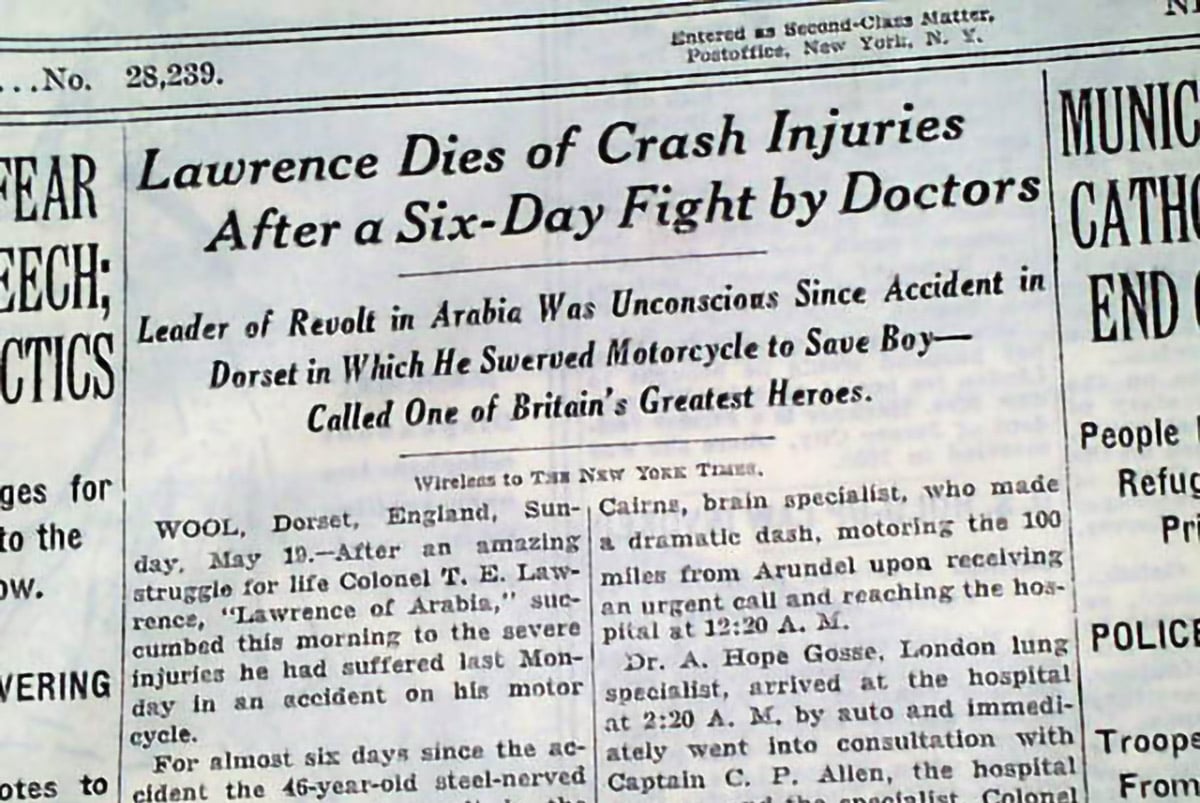
This tragedy significantly impacted one of the doctors who treated Mr. Lawrence. His name was Hugh Cairns. The results of his research were published in British Medical Journal between 1941 and 1946 and led to the use of crash helmets, which nowadays save tens of thousands of lives every year.
Conclusions: Always wear a motorcycle helmet, even if riding to a nearby 7-Eleven.
Tip #7
Remember that motorcycle riding is hazardous. Thailand is the country with the highest motorcycle accident rate. More than 86% of road crashes in Thailand involve motorcyclists. Do you remember the first picture for this page?
So, if you don’t have any riding experience, we kindly recommend you refuse bike renting and use a car or a taxi. Or you can have a preparatory course at the best training center for riders in Chiang Mai organized by Honda.

Tip #8
Don’t stop too close to big trucks at traffic lights. Very often they can’t see you because the car’s cab is too high, and this can cause you to be crushed like a bug. Only stop at traffic lights in the far left lane. It’s safer than stopping between lanes.
Tip #9
Never start your scooter without getting on it. If you do not sit on the scooter but stand next to it and press the button to start the engine, this can cause the scooter to drive off in an unknown direction without you. This could lead to an accident or even the death of another person, and you would be held responsible.
Tip #10
Try to avoid puddles on unfamiliar roads. For example, under the layer of water, there may be a construction pit that is 2-3 meters deep. Although from the outside, it will seem like an ordinary puddle.
Tip #11
Observe the rules of the road and the speed limit in the city and outside the city. Remember that in the city, the maximum speed is 50 km/h. These limits are introduced not to impose fines on drivers but to ensure the safe movement of traffic.
When driving out on the road, look to the sides because anything can happen. ALWAYS look on both sides of the road because you will almost always encounter a driver or rider driving on the wrong side of the road. You’re in Thailand – get over it.
Tip #12
Try to avoid the trucks loaded up with building materials and other junk. Building materials and other rubbish have this tendency to fly out of the back of the car, drop on a biker’s head and take him to the next world.
Tip #13
Do not use cap-helmets like in this photo. Remember one simple truth: A cap helmet is a crap helmet.
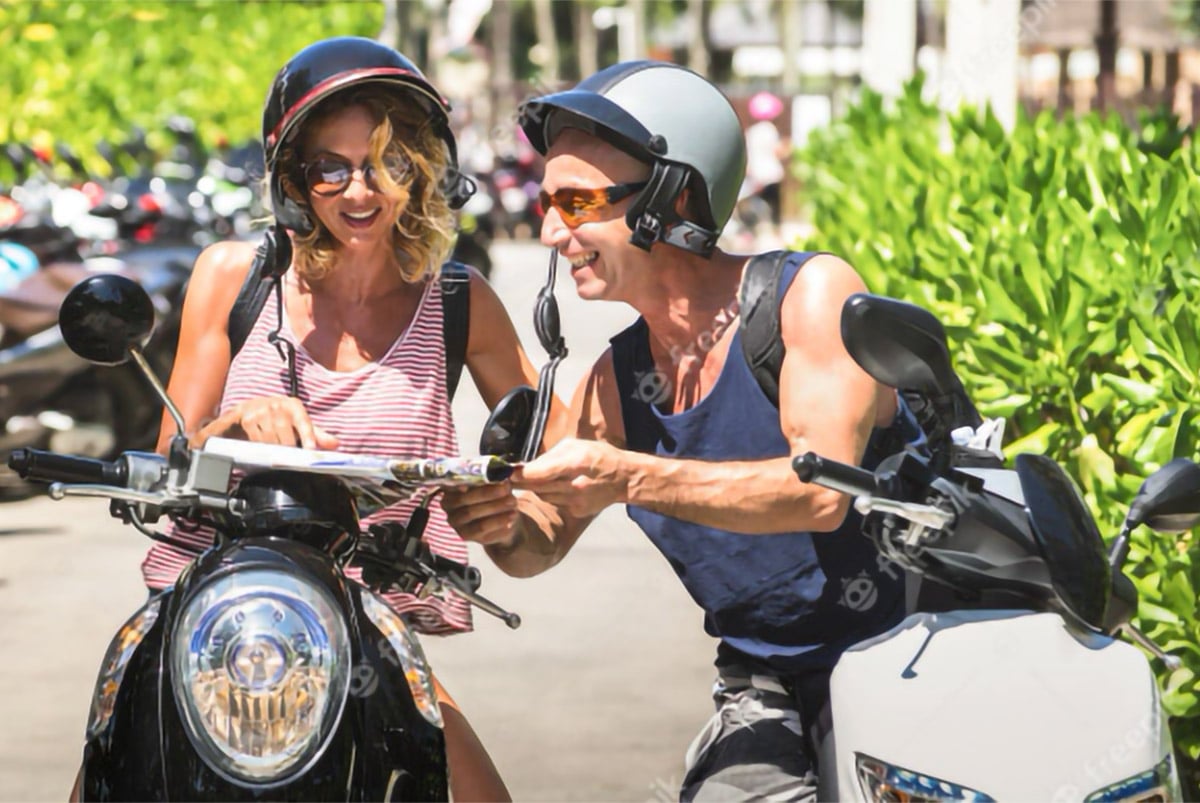
In case of a crash, a cap-helmet most likely will not save your head from injuries, which means you risk spending the rest of your life being a dummy or getting fatal head and brain injuries.
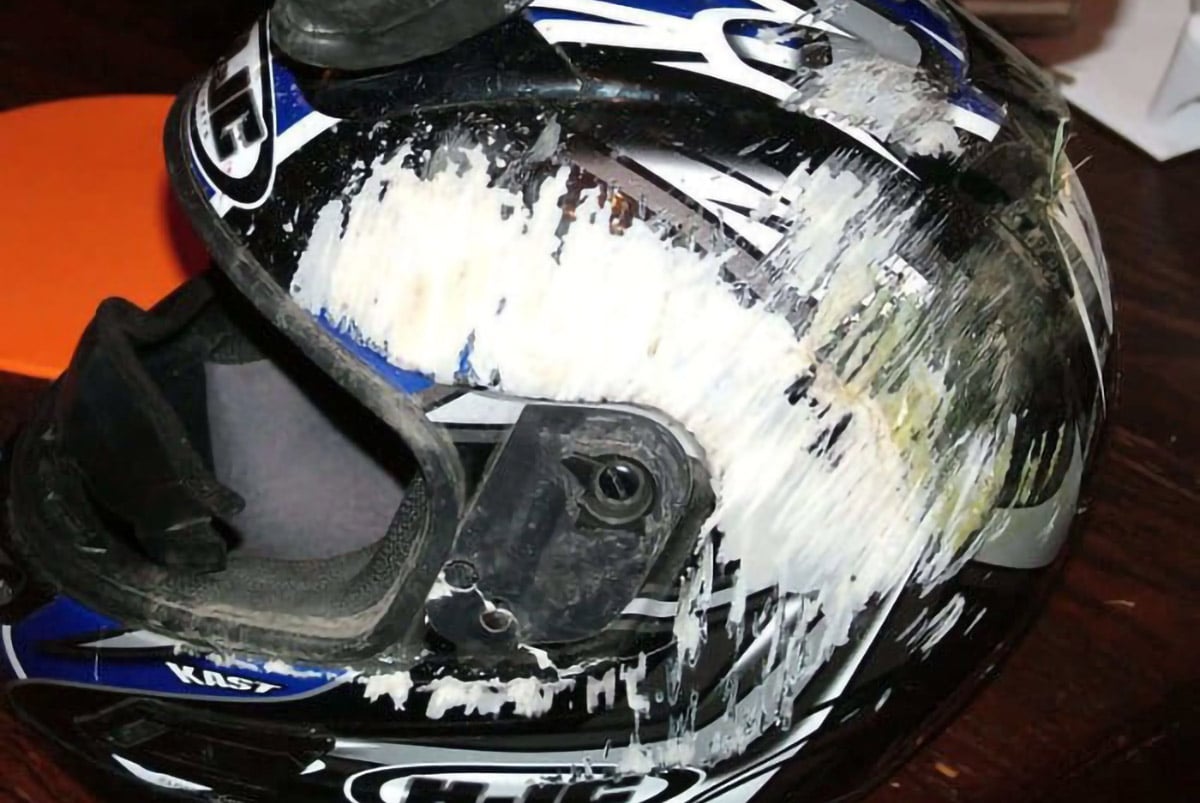
If you want to save your life, at least you should have a three-quarter or full-face helmet.
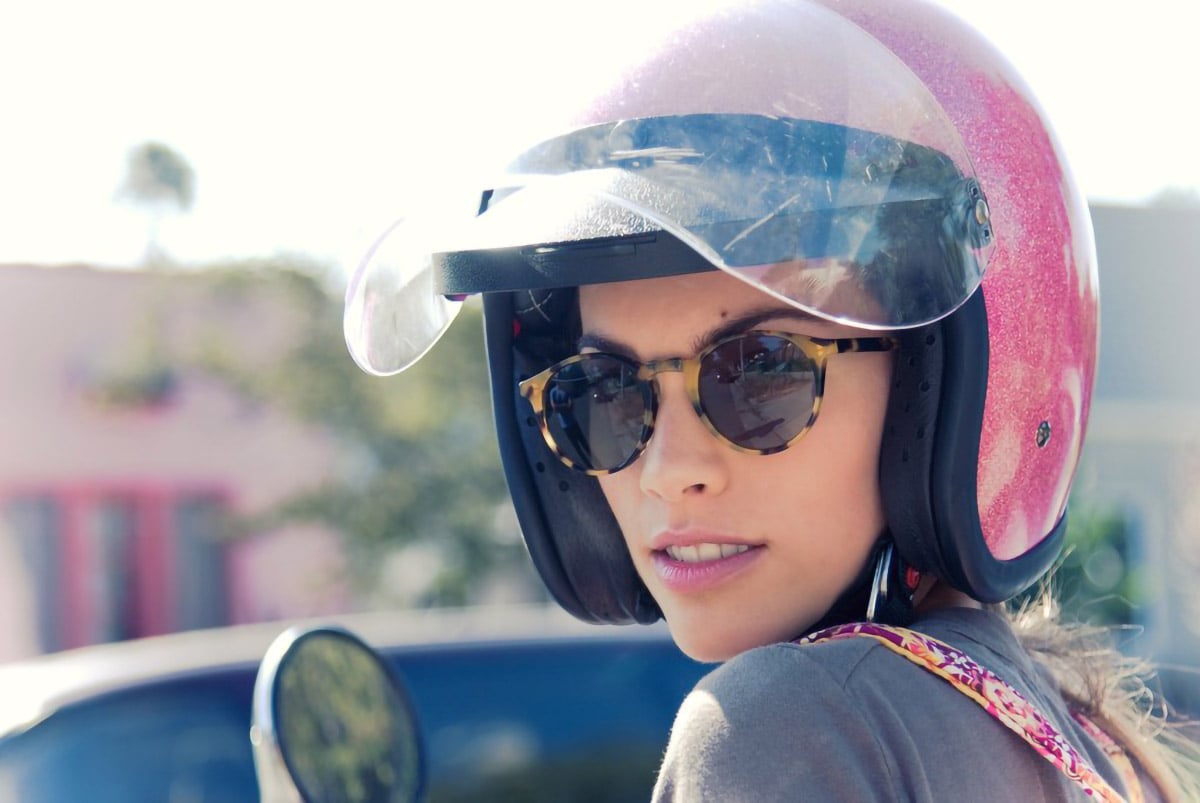
Tip #14
Motorcycle tire pressure is an important part of its readiness for a safe ride that often is forgotten. Don’t forget to pump the tires. According to the manufacturer’s instructions, the rider must check the tires once a week. We encourage you to do it once a week or every time you get to the gas station, depending on what happens more often.
If the tire pressure is not correct, the motorcycle loses its sustainability and starts vibrating and wagging.
Every gas station in Thailand has an air inflation machine.
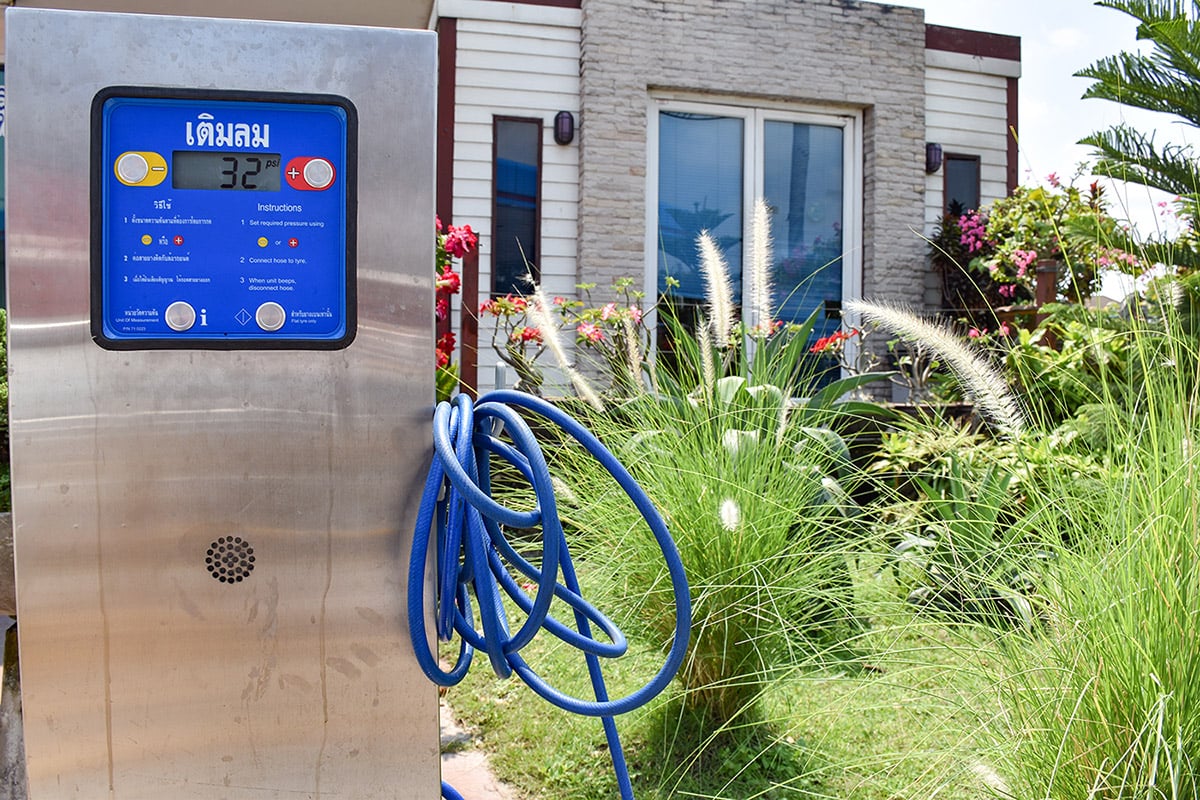
Recommended tire pressure for most of the scooters is 32-33 PSI. If you don’t know how to use it, you can ask the staff at the gas station so that they will help you.
Tip #15
Always keep to the left of the road. Mainly on the road turns. Especially if the road turn is “blind”.
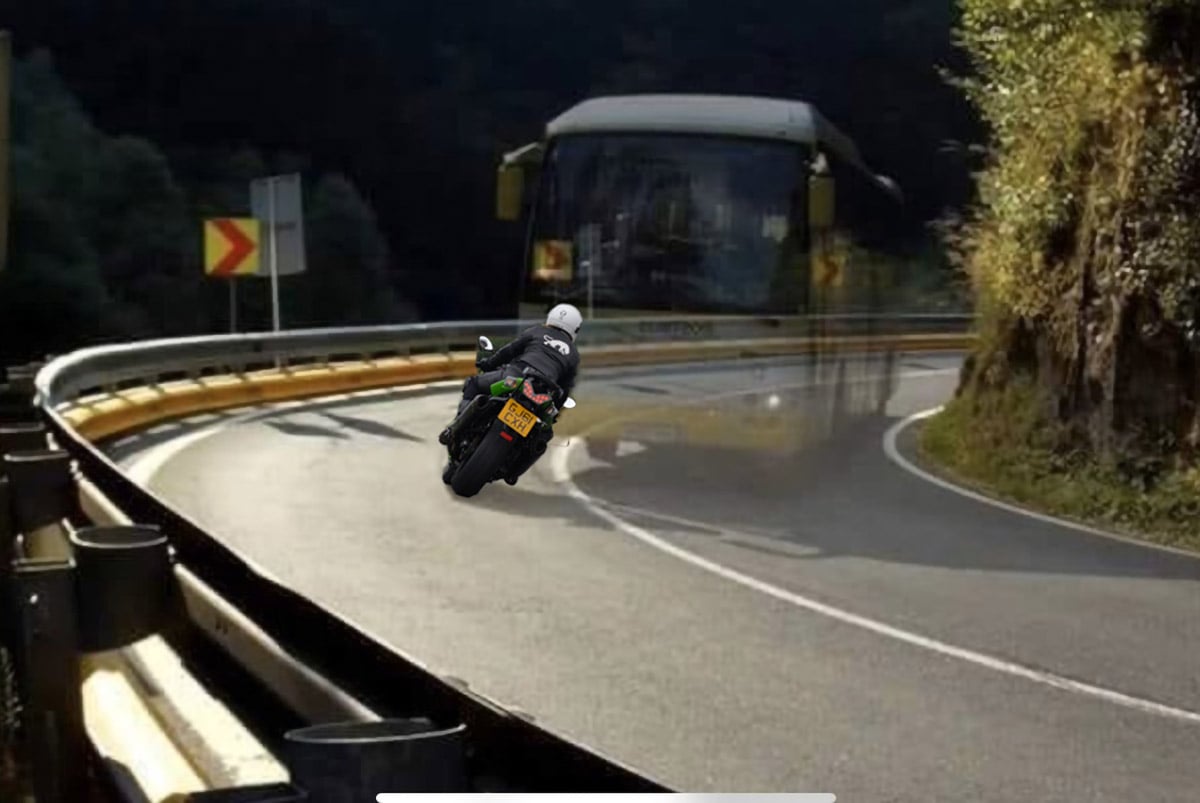
Tip #16
Don’t ride the bear on your motorcycle!
Embark on an unforgettable journey through Northern Thailand with the help of our detailed travel guides. They showcase the best scenic routes and local highlights. For those ready to begin, our scooter rental in Chiang Mai offers excellent options. It’s also important to review our terms and conditions to be well-prepared. With these resources, you can confidently explore mountain trails and charming villages, making the most of your Northern Thailand adventure.
Our website is packed with valuable information to help you make the most of your motorbike adventure. By utilizing these resources, you can ensure a well-planned, memorable trip that captures the true essence of Northern Thailand’s natural and cultural treasures.
Cat Motors Team
- Author: Konstantin Zh
- Updated: March 26, 2025


